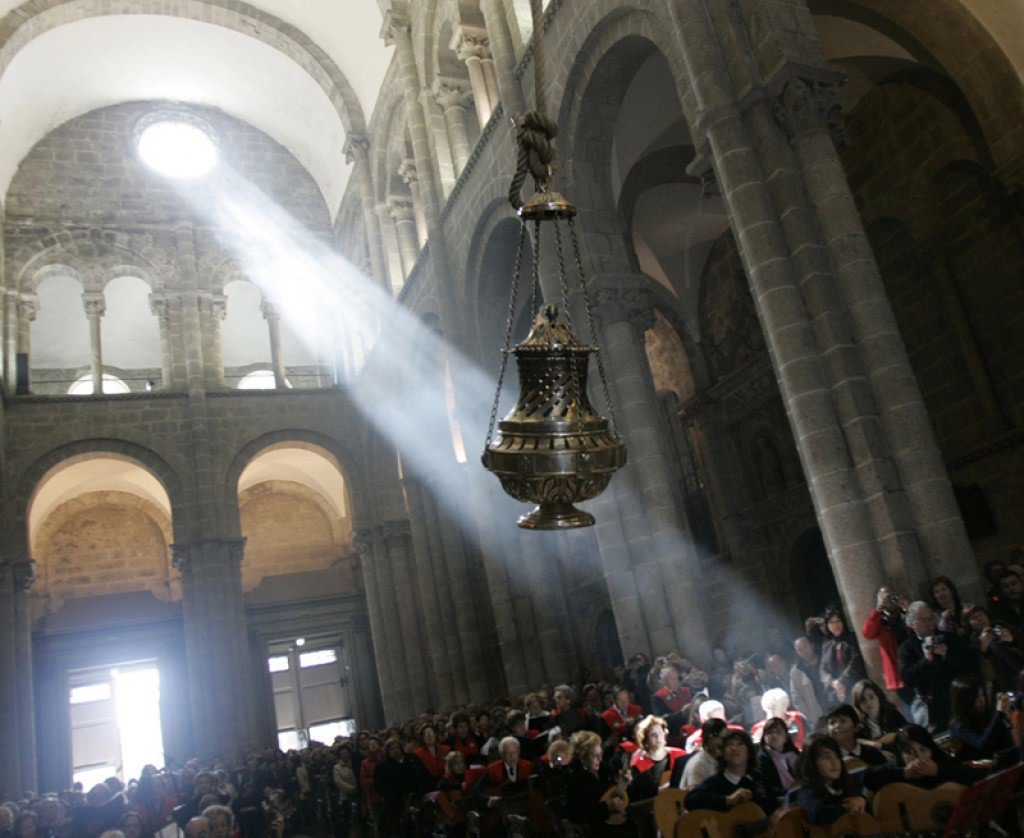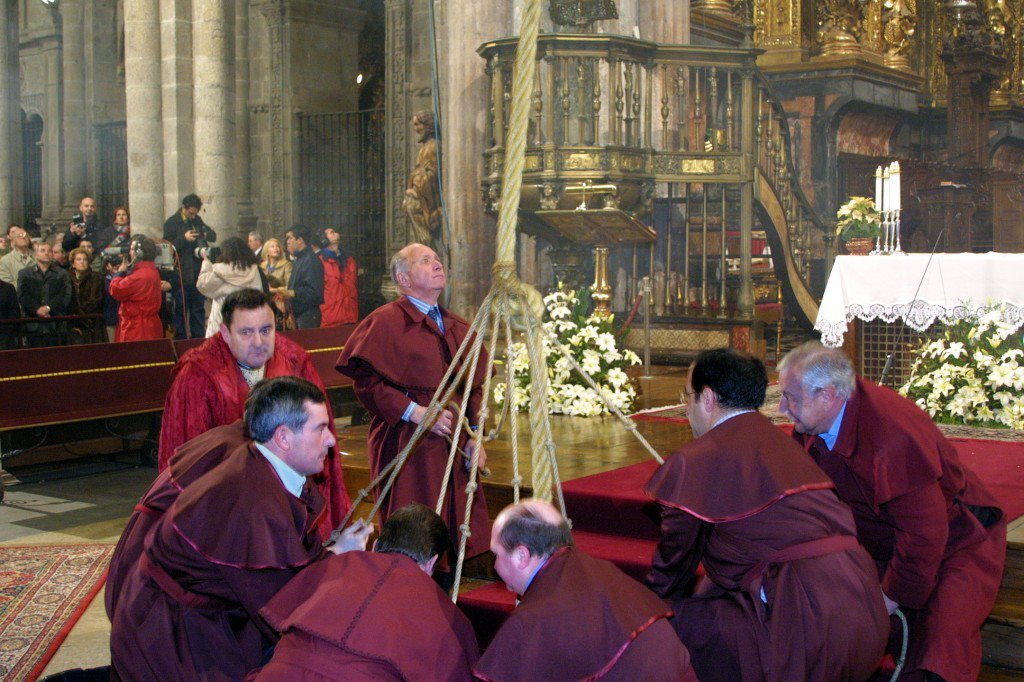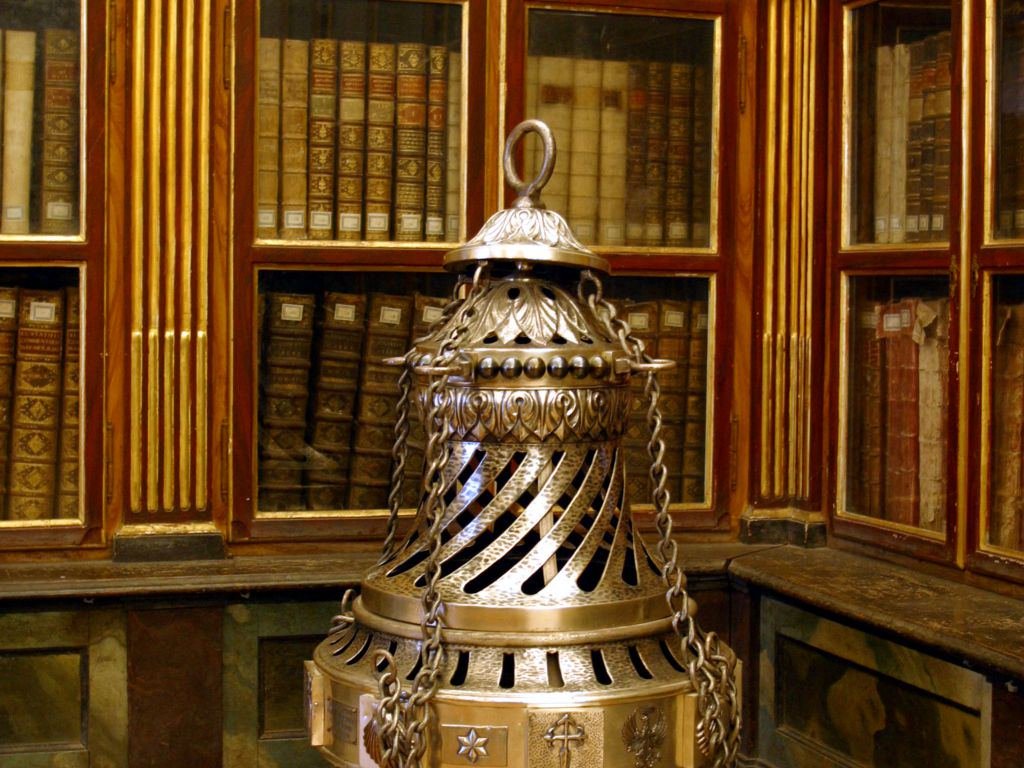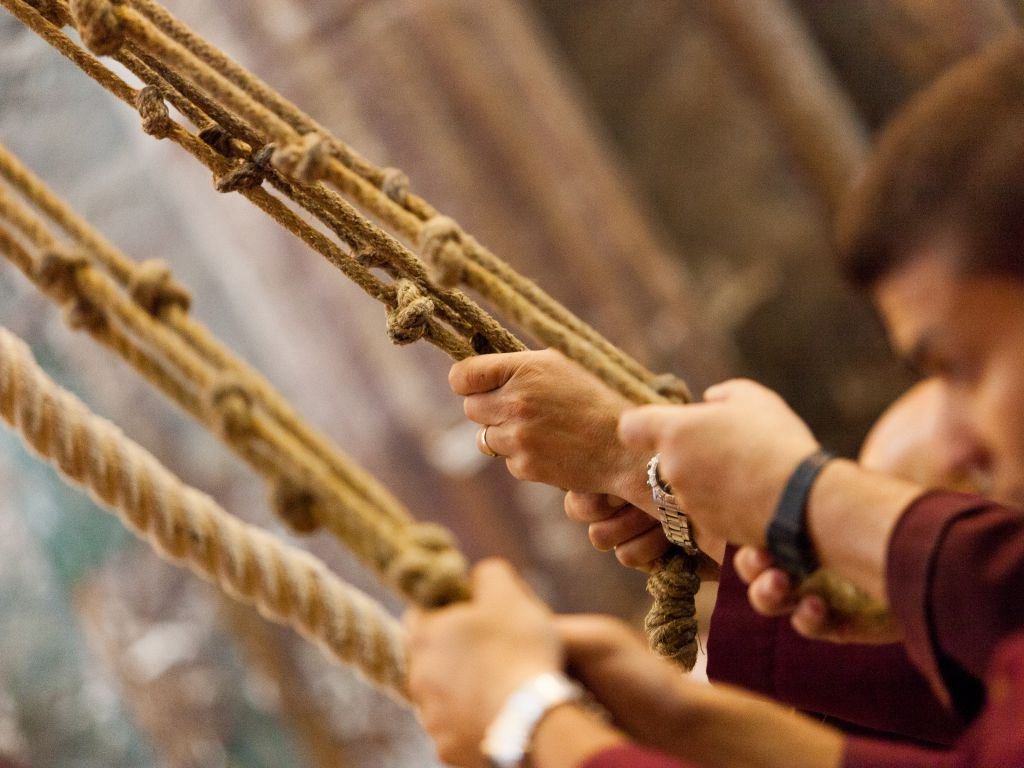

The botafumeiro is one of the most popular symbols of the cathedral of Santiago de Compostela.
Recently, after completing the Camino de Santiago, I had the great fortune of being able to admire it, something very extraordinary and occasional. Here you can see it also in two small videos that I made.
Here is a video that I made of the collection process of Botafumeiro
The botafumeiro is a gigantic censer that weighs 62 Kilos empty and measures 1.60 meters in height.
To release the smoke from the Botafumeiro, it is filled with 40 kg of incense and charcoal.

The contraption hangs from a long rope anchored to the ceiling and from which 8 men, called "tiraboleiros" pull, to make it oscillate, by means of a system of pulleys, along the transverse nave.
The tiraboleiros pull the rope in coordination to get the botafumeiro to begin to oscillate and win more and more speed.
There is a greater tiraboleiro that is the one that coordinates the rhythm of the impulse and is in charge of stopping the censer.
The botafumeiro can reach speeds of almost 70 km / h in its displacement so that it arrives can acquire enormous energy and the rope can break.
Accidents have happened. Thus in 1499 the rope was broken and the botafumeiro was dismissed by the Puerta de Platerías. On this occasion Catherine of Aragon was visiting (the first wife of Henry VIII of England).
The same happened in 1622 and in 1937, without any of them producing victims.
At present, the precaution is taken to leave the presbytery clear and to move away the parishioners and visitors, so that they can contemplate the maneuver without danger.
The botafumeiro mayor is only used in solemn masses.
In the eleventh century it was when the use of the censer in the cathedral of Santiago was begun to perfume the temple and eliminate bad odors issued by the sweaty and tired pilgrims who arrived after completing the Camino de Santiago.
The Camino de Santiago is the only Christian pilgrimage route that has remained unchanged on foot since the tomb of the apostle Santiago was discovered in the ninth century. It has, therefore, more than 1000 years old!
In the year 1400, King Louis XI of France made a donation to the cathedral to replace the medieval censer, but its replacement was delayed until 1554.

The new censer was entirely made of silver, but this was stolen by Napoleon's troops in 1809 during the war of independence.
In 1851 a replica of the disappeared was made. The goldsmith Jose Losada elaborated it with brass bathed in silver.
The botafumeiro, like other censers, has a liturgical function. The one of Santiago is especially great by the great influx of pilgrims. At that time people were even allowed to sleep inside the cathedral, which caused a bad smell very unpleasant. That is why an especially large censer was needed.

8 tiraboleiros throw each of a corporal
When the piece was restored and the rope was changed, the accumulated dirt was evidenced, as well as the wear of the rope caused by the use. Therefore, the Cathedral Chapter decided to restrict the number of flights of the botafumeiro. Currently, it can only be seen on twelve dates per year, which obviously includes the day of Santiago.
The flight of the botafumeiro involves maintenance costs, and for the society to become aware of it and that it is an offering and not a show, the botafumeiro can be up and running at any mass, if a stipend of 450 is paid. euros
It seems to me that the flight of the botafumeiro is a special show that goes back hundreds of years and since ancient times has always generated great expectation.
It is worth seeing it in operation, even once in a lifetime, because the monks, the religious music sung and the priests who do the mass in front of the sculpture of the Apostle Santiago under the canopy of giant angels. All this gives the event a great solemnity and spirituality that always moves.

When it is Xacobeo Holy Year, it can be seen every Sunday at the midday mass. When it is not there are only 11 dates in which the botafumeiro can be seen in operation and are:
January 6th,
Resurrection Sunday,
The day of the Ascension of the Lord
The feast of Pentecost,
On May 23 commemorating the Battle of Clavijo when the Apostle came to the aid of the Christian army riding a white horse.
On July 25, which is the feast of Santiago Apostle,
On August 15, the Asuncion de la Virgen is celebrated,
On November 1, which is the Feast of All Saints,
The Sunday before the first Advent celebrating Christ the King,
On December 8 where the Immaculate Conception is celebrated and
December 30, which is a holiday to celebrate the translation of the Holy Apostle

Video recorded with Go Pro from Planet Doc

Botafumeiro in action recorded with a GoPro

I sincerely hope that you liked this publication. I wrote it with enthusiasm remembering the trip. My intention has been to accompany me, providing information but without being boring. I hope to count on you in other experiences.


The initial videos were made with my iPhone 6. In addition, I am the author of the drawings of separators.
I await your comments!
¡Buen Camino!


